Future Projects – and the logic behind our scheduling
This is our first blog post on here! We intend to use this blog for announcements and newsy things.
Future Projects
The first item is a simple explanation. When we launched this site six weeks ago(!) we had no idea what the outcome would be. We have never done this before and had nothing to plan with. We were not sure how many people would sign up or what working knowledge and skill level members would be at. Despite the short amount of time since we launched, we feel much more equipped as a result of the interactive feedback you have volunteered and we thank everyone for that. Our initial plan was to do the wall clock, which we hoped would work for both beginners and those with some experience. That seemed to be an all-round success.Our next planned project was be the Craftsman-style rocking chair. We planned this before we launched the series and so it had all the associated unknown factors mentioned above. Who was going to sign up? We did not know. A concern was raised on the forum about the complexity of the project. This was confirmed by emails and other conversations with our members. We have decided to postpone the rocking chair project. Please understand that there is really no chance that this will get cancelled. We have already filmed it 🙂

As a result, we took the decision to introduce some other somewhat simpler and smaller scale projects that will build up to the chair. We thought long and hard over what to do so that those more advanced members do not get bored by overly simplistic projects. All of the projects that we have have some inbuilt complexity or unusual feature that will hopefully expand and challenge the learning experience for everyone, even the most experienced, while still being attainable by anyone.
People have been asking for our schedule of projects. This would be quite easy to come up with and I do not want people to think that it is due to a lack of care that we have not posted such a schedule. We want to get feedback from each project and see how we can meet the needs of the community. If we scheduled for the next year we may find that in three months we were leaving the majority of members behind because they are unable to keep up or are without the careful instruction and attention that they need. We also could aim too low and leave people frustrated and underachieving.
After our Christmas episode, which you will only have to wait two days for, we have decided to do some dovetailed boxes that Paul made recently and posted pictures of. These, we feel, fit the criteria perfectly. There is a range of somewhat complex features in the boxes, but also, the basic format of the simplest box will be achievable by anyone.
This idea of planning as we go is actually a lot more work than just scheduling for the long term but we hope that as we go we will be able to better anticipate the needs of the members and may be able to schedule for longer periods. In all of this we do welcome your input so any comments and feedback will be always most welcome!
Thank you all for the support and encouragement. It helps.
Happy Holidays from us all!
Joseph Sellers


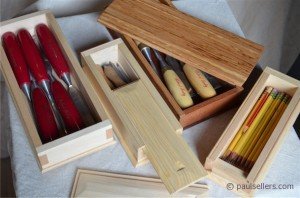
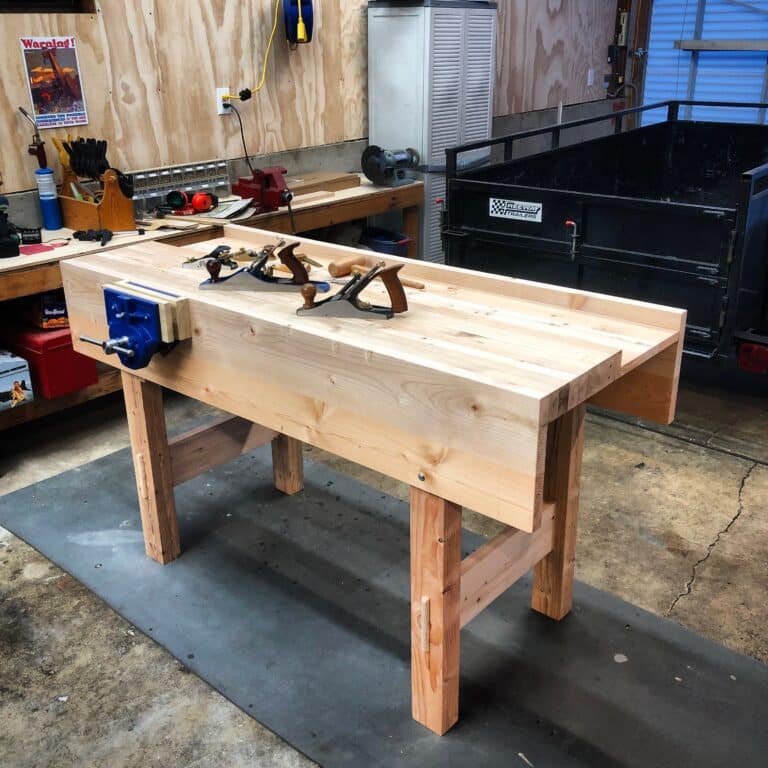
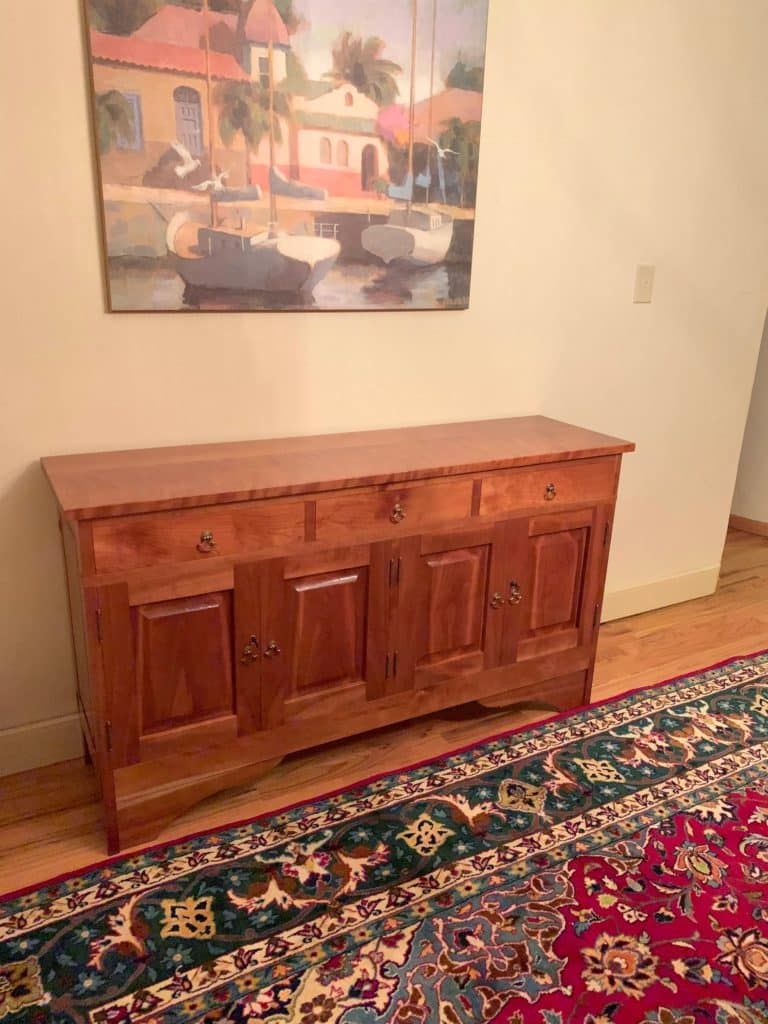
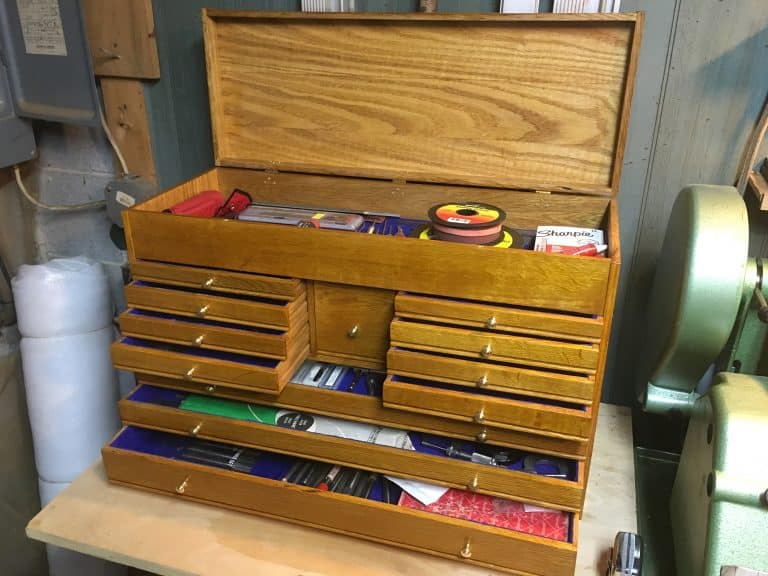
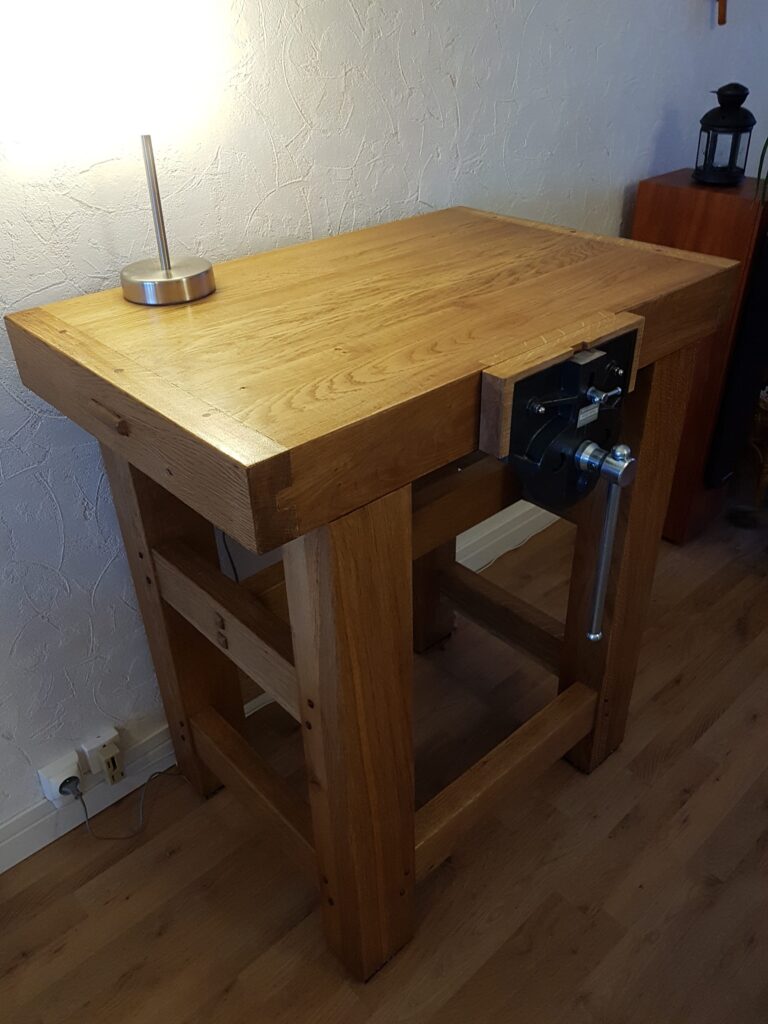
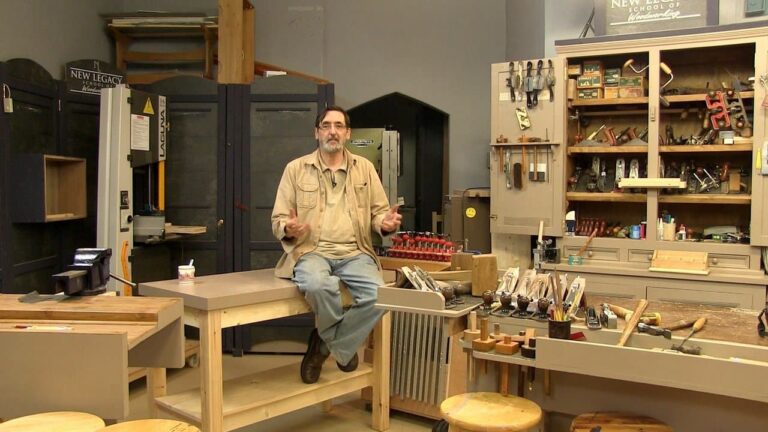
Thank you Joseph, I for one think that is a great move.
Very Best to all
Ken
I think you are doing a great job.
Its hard to keep everybody happy,but so far i think almost everybody is,
i know i am.
Happy Holidays to you all.
Juryaan
I’m here with one purpose only and that is to learn and for me that means I’m more interesting in building skills then in making projects. So when you announced that next project will be chair I knew that I won’t be making one. But on the other side, I realize that chair is full of M&T joints that I really want to learn. And I think this generally goes for all projects meaning that in every project there is something to learn even if you are not interested in project as such. That being said I know that you guys now have much clearer picture about members and expertise they have and I’m fully confident that based on Paul’s and your experience you will chose projects that will suite to majority of members.
This is my hobby and I think that so far this is wisest spent money on my hobby. So thanks and keep on doing good job
Happy Holidays to you all
Sinisa
Thanks for the update Joseph,
The path that you describe sounds very good indeed. Much credit to you and Paul for being so open-minded and dedicated to your members. I have no doubt you will create a series of projects that will be a gold mine for woodworkers around the globe.
Thanks for launching this great adventure and happy holidays to you all!
Jesper
Joseph – I just stumbled on this thread by looking through “activity.” I can’t find it from the home page or on the forum page…where is it or a better question: how do I find it normally? 🙂
By the way….great move!
John
Hi @poutierj,
You can access the post through the ‘News’ button in the main menu at the top of the site.
Yesterday it may not have been accessible through that for a few hours which may have been why you had a problem. Sorry about that.
Joseph and Paul,
I very much appreciate your timely interpretation of feedback from the members, and think that this is a good decision. More simpler projects will save the majority of members time, and also money on wasted wood from mistakes. I was also apprehensive about the rocker, not because I don’t think I could, but that would be a significant investment in materials for a project I have no doubt I will be able to do much better a year from now with more experience. Smaller scale projects should teach the same techniques, with less of an output for those of us who are learning this on a shoestring budget 🙂
I’ve just been posting in the forum asking if anyone knew how to make these boxes after I saw a picture of them on one of Paul’s blog posts. Now I feel stupid!
Great to see the series is continuing with such gusto. I have held off purchasing a subscription until I see a couple more projects in the series and complete the last couple of projects in Working Wood. It’s looking really promising and the community is really coming together well, so great job!
George.
@george no need to feel stupid. It is a great question and although I will not be able to give as detailed an answer as the videos will take (a few hours) I am happy for me and others to help you.
Thanks everyone! Your support and feedback means a great deal to us. Keep it coming!
This sounds like a good plan Joseph and Paul. The undertaking of a rocking chair at my skill level was a little intimidating at first but with Pauls instruction I was confident I could do it. Whatever you guys decide on I am sure its going to be educational. One of the things I’d like to see is Paul discussing design considerations when planning projects, style considerations ( I still don’t understand what “shaker style” is). Construction considerations when building cabinets, both large and small and when to choose certain types of joinery and their strengths and weaknesses etc. These things fascinate me as well as how they did it 150 years ago without LePage PVC glue? I’m sure they had some common sense methods.
We are planning a few projects where I would like Paul to discuss these kind of issues in more depth. Meanwhile, send Paul a message on his site and ask the questions one by one and I suspect he will write an in-depth blog post reply. It might take him a while but he loves answering questions like these.
Joseph,
I’m just along for the ride. The subject matter is not as important as the process and the technique. If you are concerned about participants losing interest because of we have either too little or too much experience, you could consider running two projects at once. I suspect however, as time goes on, there will be enough projects for anyone to find an interesting project that they will also educate them. Keep up he good work!
Mike
I’m along for this ride regardless of what project is on the board. I think smaller projects up front will be good for newer woodworkers and good practice for those who have been around awhile. Looking great so far !
Brent
I agree with Mike and Brent, I am along for the ride as well and have greatly enjoyed making the clock by hand. Joseph and Paul, thank you for taking the time to put all this together and making it accessable and affordable. I look forward to Wednesdays now as it is the unveiling of a new video.
Thanks again
Dallas
I like your idea of steering the classes (or projects) by the feedback from the members. I think it will pay off in these early stages of the site and this program. After a period of time, members will be able to pick and choose the projects based on their interest and, skill level, then work and learn at their own pace.
While I don’t feel I’m ready to take on a project like the rocker at this point, I want to do it someday. I would have been (and will be) happy to watch the series … taking in as much about the techniques involved as i could.
My work area is really lacking right now. I don’t feel I’m able to perform all the tasks needed for any of the projects but, I’m working on it and, can’t wait to get it there. My “shop” is really my primary project right now. I’m using some of the things I’m learning here in that effort.
Keep up the good work Joseph and Paul.
I’m ready for the new videos of the next project. Let’s go! 🙂
kelly
—
I’m cool with whatever you & Paul decide. Before I watched the DVD set, the projects looked intimidating and out of order. After I watched them, the way and order they were presented in made total sense.
Joseph,
thank for your understanding!!! i’m still bussy with the workbench and still gettiing “in form” with it. My body requires more time to do the job. Much more that what I’ve ever realised…
Thus what ever the rythm you decide here i’ve wil try to keep up with it!!!
Thank you very much for everything! and happy holidays
Hi Joseph
It sounds good to me , I think it is fantastic the way the site has developed in such a short time. Your site is the first thing I log in to when I switch on the computer.
Best wishes to you, Paul , the New Legacy staff and all of the site members
David
Thanks!
I seem to be the odd man out on this thread. I was really looking forward to doing the rocking chair this winter. I have a lot of confidence in Paul’s teaching to be able to present simple and effective ways of accomplishing complex tasks. I’m sure that I will continue to develop skills with the smaller projects, but there’s something quite exciting about a more challenging project that really makes one stretch. Not to be too much of a sourpuss, I understand what’s driving the change, and kudos to New Legacy for even trying this venture. Here’s hoping the bigger projects don’t get put off very long.
I cannot promise anything because of all the reasons outlined above but I hope we will reintroduce the rocker in the next six months.
Eric, I understand your thoughts – the rocking chair seems like an awesome experience.
One idea for Paul and Joseph: if you could post a blog entry or video about the wood selection for the chair that could really help us get ready and be all prepared for the project start.
Jesper.
I think that is probably a good idea. I will look into it. However, I think it may make better sense to give the cutting list for the coffee table that will be just before rocking chair.
Paul/Joseph:
Just to ditto Jesper’s thought: a lead-in to the chair describing the wood selection needed, would be great.
i too am excited to get to the more difficult projects but as long as there’s something new for me to do with a project, or even a new way to accomplish something i’ve done before, i’ll build it. scratching the bead with a screw for instance, was enough to get me to build the clock.
that said, i’m hoping to see a time when newer, less experienced members are referred to earlier projects for thorough explanations of how to use a marking gauge, make a knife wall, chop a mortise, etc..
I could not agree more.
Joseph and Paul I think this is a great move and thank you for revisiting the projects. I am interested in wood working with hand tools and I really like Paul’s approach. I am a subscriber and intend on following the projects regardless.
However having said this I am a new comer to Hand Tools and am a bit afraid of the chair all though I want to build one one day. Also being retired I am on a fixed income so I have to budget my monies for tools and wood. This is another reason I like Paul’s approach using PIne or Big Box wood as it is fairly inexpensive and still can be challageing because it can be soft and some what brittle and I like small projects. So the wall clock, tool tote, and these boxes are perfect to start to learn about working wood IMHO plus they are fun to make without breaking the bank.
Keep up the great work and look forward to remaining a long time member. Now I do have a stupid question as long as we are paying monthly do the projects shown all ways going to be available or do we need to download everything and take a chance of loosing these for future reference. Like the magazines I buy I can all ways go back to check something out. If this has been covered and I missed I apologize.
Merry Christmas Steve
Like everyone else, I am quite happy for you two to decide what you want to film and show; I have been wanting to find the time to build projects using hand tools and I have found that these small projects are both achievable and within one’s grasp. I am rebuilding a 27′ Morecambe Bay Prawner and have been doing so (on and off because of the daunting nature of the project and because I am an entirely self-taught novice boatbuilder) for some years now, so it is nice to be able to be taught to work in wood with great attention to detail and to be able to refine one’s technique. What these videos have done for me is to keep me thinking about working on the boat project and to improve my skill level. I have enjoyed reverting to lightweight planes, and I have also enjoyed the minimalist philosophy that underpins these projects, and which will carry over into the boat and into other craft-based things that I am involved in, like making hives for my bees.
So you two carry on – I will follow, quite happily!
Like many others I was initially surprised to learn that the next project was planned to be a chair. I thought it would be quite a challenge for me. I also fancied making a tool chest to hold all the tools I’ve bought on ebay. 🙂
Then I read Joseph’s reply:- https://woodworkingmasterclasses.com/topic/tool-chest-as-a-future-project/#4124 and remembered one of the things Paul told us when teaching us to make shaker candle boxes on the course I attended last year. He told us to keep in mind that the point of the excercise was not to make a box but to practice making four dovetail joints. I think the same is true for these projects. Most of are here not to make clocks, chairs or boxes but learn to become better woodworkers by practising on the tasks Paul sets for us. (If I just wanted a clock I would get a much better one by paying Paul or Joseph or another craftsman to make me one!).
A few days ago I cut eight mortices in the legs of my workbench. The first four kept improving, five was bad (getting careless), and eight was the best of the lot. I think that cutting 48 mortices for the chair will teach me such a lot. So I’m now looking forward to the chair, whenever it’s planned, and to any other project.
Thank you Paul and Joseph for the Masterclasses, thanks to everyone who give advice and encouragement on these forums, and a Happy Christmas to all.
Dewi
Paul and Joseph,
I have been facinated with the traditional way of working wood for about 10 years or so. I have been a carpenter most of my life and moved into fine interior trim capentry in 2005. I have already purchased and gave up one tool kit and have read many things on the subject. Your web sites ( and now books and dvds) have got me moving in the direction of obtaining these skills.
I like the idea of learning these skills through projects rather than punching out 10 stopped housing dados on a board. At the end of the day you have something to show for your efforts and there is a history of progress through the items you built. Also, you have a system that works and I respect the fact that you have put in 50 years.
I have said it before, but I want to say thanks again for your dedication. I am looking forward to the box project and what ever else follows. My bench is getting close to being finished and the bench videos introduced me to you 2. Thanks for taking the intimidation out of traditional woodworking.
While my woodworking background is a slight bit beyond being a beginner, I came in through the door marked “small boat building.” That work has nary a straight line or square joint. Curves, curves, gorgeous beautiful curves everywhere, but no straight joinery, simpler joinery and precious few dovetails or dadoes.
So, I appreciate your dropping back to some fundamental skill building projects.
That said, I’ll take them in whatever order you decide because there’s value in every single project., with skills easily transferable to other objects.
Thanks for the very approachable teaching style and all the behind the scenes technical aspects that bring this wonderful knowledge to us!
Here are my two cents:
Since the site is just a baby, we are anxious to receive what we expect of the Masterclasses. When the site grows with several projects in the next months, then the students will have several projects to choose from according to their expectations. My suggestion is that Paul should classify each project so we can choose in a latter time where we want to start, for example: Skill building projects for beginners, intermidiate skill building projects, and the most challenging projects.
Take my example, I am a beginner to intermediate student, but I will start building my bench in the middle of january, so by the time I get to work with the projects on this site, there will be lots of projects to choose from. I guess the anxiousness is from the students who enrolled early and are following the classes as they come.
Best regards to all of you
I’m for whatever comes next, ’cause I’m still,working on the box. I’ve made dovetailed boxes before, but nevr been satisfied. This instruction is helping advance me to a whole new level of precision, and together with the philosophy of Mr. Seller’s writings make the whole experience feel worthwhile. To now be able to sharpen in a minute is a world away from where I was three months ago. Gone is the jig and the fretting about microbevels.. Now is the time for building!
I bought Paul’s book ‘Working Wood 1&2’ which is why I spotted Paul’s name on an a plug for this new teaching website in an email. I have started building projects from the book but was really pleased to see this site with video tutorials to help me understand the techniques. I planned to build a new workbench soon to help me with future projects and I see there are video tutorials for that already. I think I may be a bit behind many others enrolled here, but I guess that shouldn’t matter.
Hi Jerry,
I’m still building my workbench and behind everyone else. That’s ok we will have lots of projects to keep us going, once we get started.
Very Best
Ken
I’ve been thinking about the fact that Paul has made hundreds (probably thousands) of dovetail boxes and he STILL enjoys making them. I’ve done 3 and I feel like I would like to do a dozen before I’ll say that I know what I’m doing. Reminds me of when my son asked me how many crowns I had made in my dental career. I told him that after the first thousand I stopped counting….20 thousand later I still enjoy the process……Best to you, Joseph, and your daddy.
When planning projects, please consider there are a very large number of sites on the web detailing basic techniques and processes but very few, if any, detailing more advanced techniques and more complex projects. Perhaps, occasionally you might consider including a project that would be of value specifically to those people looking to tackle such a project but would need and appreciate the extra help a forum such as this would provide.
Paul,
I have watched many a wood working show on television, going back to the New Yankee Work Shop hosted by Norm Abrams. It was based on machine wood working with very little hand work. Seeing that it was funded by Delta, Porter Cable and the like, it’s understandable. Now finally after all these years we have you! No offense to the Woodright his show was more of a history lesson.
Your practical approach, showing the way has been long over due.
Tom
Thank you for that Tom. It will likely surprise you and others that I have never watched either of these two men .and if you total up my hours of watching woodworking videos it might possibly total 15 minutes. I did once watch a series for some editing comments but that was it.
I will rely on you and others for helping me know that the filming is educationally accurate, pleasing on track. I do of course check through the woodworkingmasterclasses to make sure there are no glaring errors.
I have purchased Working Wood 1 & 2 and the companion DVDs. So far I have carved 3 spatulas and 2 spoons. Didn’t think I could it, but I did. the bowl and stool are next. Working on adapting your book shelf design into one of my own, much bigger and free standing. roughly 44″ wide and 72″ tall, need space for magazines and books of course. Any suggestions?
Hi Tom,
I don’t see any problems with that but you may consider using slightly thicker wood. Books and magazines are heavy!
Joseph,
Plan on using 4/4 oak with a 1 1/2″ wide stiffener
glued to the front edge of the shelf then sanded flush and finished. Also similar to the book shelf in the class a piece of stock mortised with a through tenon on each end on a middle shelf to the keep the sides in place.
Sounds like it should work just fine. Let us know how you get on.
I would like to propose breadboard ends as a short project. Although it is not a complete piece of furniture on its own, it can be incorporated in tables and box lids and the skill building in terms of grooving, morticing tenoning doweling etc is quite extensive. Also I have not found one site or book that covers all aspects of making a breadboard ends from A-Z. They mostly focus on the tenons and leave the rest out. And its not just technique that’s missing, but dimensions-minimum width of the end, minimum mortice depth, haunch width for strength are all important to know.
Great idea.
Some of that may covered in the breadboard-end cutting board series, but probably not exhaustive.
Often I know Paul did show and explain a certain technique, but it’s a bit difficult to know which series, which video and at what time in the video it is. I have been thinking about how useful an index was that lists all portions regarding one technique that are a bit more than cursory so you can look it up directly. A dedicated video is always welcome, but I think to know where to look would go a long way.
David
I would really like to see a project with drawers, maybe a small night stand or something like that? I can make this myself with skills learned in the other projects, but I’m sure that there would be something to learn and drawers are quite common in much furniture.
Any chance on adding a chessboard to the future projects list? I have a nice old chess set (19th century I think) but the chessboard is not up to the mark.
It would teach us veneering, using plywood for the base, mitred edges (sloping), inlay round the veneered squares….
Hope you can consider it.
best regards
John B
We have planned on doing this and Phil just mentioned it a day or two ago. We will be doing one so hang in there.
Great, and could I wish you and Phil and the rest of the team the very best for Christmas and the New Year? I remember my November course at Penrhyn with great pleasure, and am starting to show 2 of my grandchildren how to use tools this weekend, passing on something of what I learned.
John B
I’m really looking forward to this one There are two things since being a boy that I have wanted to make, one is a grandfather clock and I have always wanted to make a chess table with drawers for the pieces.
(I’m still trying to perfect preparing rough stock so a ways for me to go yet 🙂 )
@paul-sellers
I was wondering if you also create modern (and still functional) designs.
Most made projects are a bit old fashioned in my eyes. The techniques are still very usefull but the appearance isn’t really my cup of tea. I know this is a personal thing so don’t feel offended by my opinion 🙂
(The shakers bench was lovely!)
The goal for the present and our objective so far has been to bridge the gap between what we lost to the world of mass manufacturing in losing the very skills we have been restoring through the online broadcast. Everything we have taught is transferable and scaleable to any modern piece anyone cares to build. Instead of using very uninspiring Kreg pocket screw systems and Staysharp mechanical grinding we now have thousands of people returning to what they first felt when they wanted to become true woodworkers. The joinery systems for hand work mean that those who cannot use machines for different reasons, at least four fifths of people, can discover real methods that work. It has been exciting to see this development that is changing the woodworking world.
A design only shows a style be that old or new, traditional or modern, teaching skills, which is what we do and have done so far means people can adapt all they learn to go in any direction they want to go.
That said, in the coming months `i am sure we have some new ideas and thoughts that will reshape those other areas people want to enter into so i think your question will be answered as we see everyone moving forward.
@paul-sellers
Paul,
Excellent way of putting your response to Bert’s request. Personally I enjoy the “old fashioned” styles. I do have a couple of requests since this seems to be the place to make them, one being a project and one being an extra step in the projects that would be nice to see:
The project request is for making a matched pair of hollows in rounds. Some days I think that the tool making videos are the most inspiring, they give me such a liberated feeling to watch them knowing that I can replicate what you’ve done. I think many of the tools I could have figured out how to make on my own but since I’ve never used most of them it is such a confidence builder to see someone who knows how the end result should work, feel, and look demonstrate the process. I’ve made a few planes and tools but there is always a niggling doubt in my mind whether or not they are performing the way the originals should.
Second, would it be possible for you to post a rough cutlist for the upcoming projects when you begin filming them rather than waiting until they are being released? I work in an unheated, non-climate controlled shop and buying my lumber from outdoor local independent bandsaw mill owners (one who kiln dries and one who air dries) I have found it very beneficial to purchase my lumber as far in advance as possible, skip plane it, and allow it to acclimate to my very humid work environment for as long as possible. I hope to build the next tool chest along with the release of the videos (the humid shop has been playing hell on my tools) and would like to start purchasing my lumber now.
Thank you yet again for the education and knowledge you are providing us, it truly is life changing!
I am sure we can do this if we get organised. Cutting lists are a prerequisite for my work anyway. The only problem is how flexible will everyone be say if I give my first cut list and then change something because I have a piece of wood I can make work or I feel the look is better. I am working on a smoother and a jack plane right now that I did that with, to improve the design really.
I wouldn’t min doing a couple of moulding planes but I do question how everyone will feel about this. It’s quite a bit of work and then there is the tapered iron to be smithed too???
Moulding planes would be excellent because it can be quite difficult in my opinion to find good ones on eBay and a few homemade moulding planes would be just the thing to drastically improve our projects I think anyway.
Paul,
I must say, handmade molding planes do sound like a challenge I would enjoy.
I have made the rebate plane and would love to follow the Master as you create a molding plane.
There is something about using a tool that came from your own efforts that defies description.
Sincerely,
Bob
Tod Herrli has an excellent video about making hollows and rounds that shows how to make the plane, the iron, and the floats. He uses flat stock stock for the iron and does not taper the iron. Presumably, he does not find that to be necessary. He uses cylinders of mapp gas to heat the iron, but you could look up Pauls hardening video instead, which shows how to use charcoal.
What really peaks my interest is when Paul shows his journal, sketchbook and scale drawings of his projects. What I would like to see is more on that aspect, the pre planning before a projects gets started.
Dan.
@paul-sellers
I love the smaller projects. Technique videos too. I’m still looking forward to the Making a Bow Saw series. 🙂
First off, i’m impressed with the quality of the projects. I’ve watched as many of paul’s videos as I could find, and am just looking around the site. I’m wondering, for someone who’s never done any woodworking. Is there a schedule that I should follow from easy to more difficult projects? Something that would help “level me up” so to speak in a good order?
The order that the videos appear on the site do pretty much go from basic to more advanced, so starting from the carrying tote to the current tool cabinet.
thanks 🙂
I have four rocking chairs in the house. Two were made in South America and meant for the outside. There’s a bit of a glue problem, and since the slats of the seat are only held on by what looks like animal glue, I’m looking forward to the project.
The other two are Boston style that look as if they would be supremely uncomfortable for my large(ish) person. In practice, they are terrific. Love to sit and carve something small. I’ve seen Paul in pictures, sitting in a rocking chair that his style, and that’s what I’m looking forward to the most.
It would be great if, even if it’s only a voice-over, suggestions for changes in design might be included. What a lovely thing to look forward to.
Hi to all & a wonderful Spring. I just tripped over this topic, and am happy I have.
I have enjoyed the mix of skill-building and more complex projects over the last year or so.
The last few pieces have been full-size, e.g. dining chair, assembly table, wall-hung tool cabinet. I haven’t made them but have been working on using the skills & techniques in them on my own projects.
I don’t recall seeing shop-made veneer or veneering as part of a project yet, or working with “dramatic” grain.
How would you feel about doing a small tea chest (say for the foil packets of tea) with some veneer, inlay or banding, and some other techniques as options? It might be fun to revisit the small box form, with some extra aspects to it.
Besides the utility (I do see a tea mug on the bench in some videos – grin), I suggest that such a project could offer satisfaction to a wide range of skills. Some folks might use just a fine piece of solid wood, and others might take on the challenge of veneer or a bit of inlay. Thanks for listening!
I agree John, and a Tea Chest is on my list of things I’d like to make….
Hello to Team Sellers,
I love all these projects. I got so much catching up to do, luckily I have the time. The project choices are great. As just mentioned above, a Tea Chest is on my list of things to make as well as a nice jewelry chest.
But my real reason for this post is would doing a one video class on the different ways of joining wood be possible? The different types of joints, their best uses, weak points, strong points. Just more an over view of joinery. Not showing how to make the joints, as Paul show that during the normal videos of a project but just a lesson on “here are the different joinery techniques a person could use”.
I look at wood so differently now. I also wonder often, why a person chose this method over another.
A post note: As for Paul always stressing take your time, enjoy the process, be perfect in your cuts, etc.. Well I could have easily been called the wood butcher before, but just lately all my cuts, joints etc have been as Paul would say “Spot on”. I listened and applied his words of wisdom.
Gary
Gary’s suggestion would be great, but may also be a good candidate for Paul’s blog since it is more about imparting design knowledge rather than skill knowledge.
The rocking chair project is coming:
https://paulsellers.com/2016/07/unasked-question-need-become-woodworker/
“no more than 15 tools and you have a complex rocking chair as a family heirloom. This is a project we are currently filming for woodworkingmasterlasses.com . Out in just a few weeks time.”
I’m looking forward to this one.